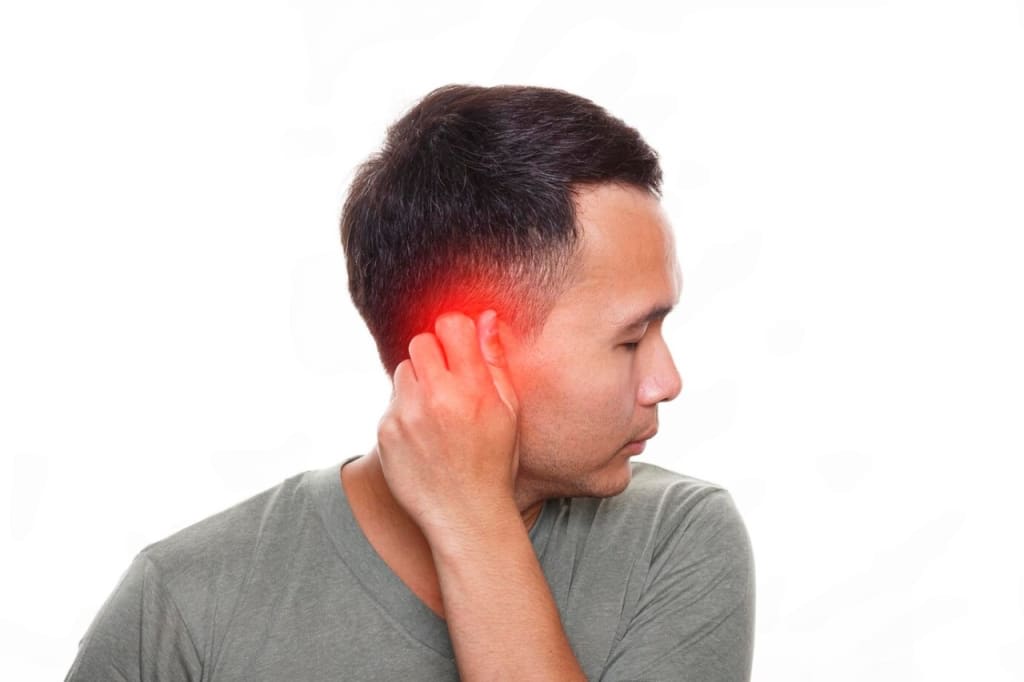Have you ever rolled over in bed or looked up quickly, only to feel the world suddenly spin around you? That intense, disorienting sensation might be more than just dizziness—it could be a condition called Benign Paroxysmal Positional Vertigo (BPPV). Though it sounds complicated, BPPV is one of the most common causes of vertigo, especially among older adults. It’s a mechanical problem in the inner ear that, while alarming, is usually harmless and highly treatable.
In this blog post, we’ll demystify BPPV by breaking down how it affects your body, what symptoms to look for, and how it’s diagnosed and treated. Whether you’ve been diagnosed with BPPV or are experiencing unexplained bouts of vertigo, understanding this condition is the first step toward finding relief. Let’s take a closer look at what causes BPPV, how healthcare providers treat it, and what you can do to regain your balance and confidence.
What is BPPV?
Benign Paroxysmal Positional Vertigo (BPPV) is a type of dizziness that occurs when tiny calcium crystals (also called otoconia) become dislodged from their usual location in the inner ear and move into one of the semicircular canals. These canals are part of the vestibular system, which plays a crucial role in maintaining balance. The presence of these crystals in the canals causes abnormal fluid movement, which the brain interprets as a spinning or whirling sensation, also known as vertigo.
The term “benign” indicates that the condition is not life-threatening, while “paroxysmal” refers to the sudden, brief episodes of vertigo that typically occur when a person changes head position. The term “positional” indicates that the symptoms are triggered by certain head movements, and “vertigo” is the sensation of spinning or dizziness.
Common Symptoms of BPPV
The hallmark of BPPV is the sudden onset of vertigo, often accompanied by the following symptoms:
- Spinning Sensation: A feeling that the room is spinning or tilting, especially when turning the head or lying down.
- Nausea and Vomiting: The dizziness associated with BPPV can be so intense that it leads to nausea, and in some cases, vomiting.
- Loss of Balance: People with BPPV may experience difficulty standing or walking due to the imbalance caused by the vertigo.
- Symptoms Triggered by Position Changes: The vertigo is often triggered by specific head movements such as looking up, rolling over in bed, or bending over.
- Duration of Episodes: The episodes of vertigo are usually brief, lasting anywhere from a few seconds to a minute. However, the symptoms can recur and may persist for days or weeks.
It’s important to note that BPPV does not typically cause constant dizziness. Instead, it presents as short bursts of vertigo triggered by positional changes.
Causes of BPPV
BPPV is most often caused by the dislodging of small crystals of calcium carbonate, known as otoconia, within the inner ear. These crystals are normally embedded in a structure called the utricle, which helps sense gravity and linear acceleration. When these crystals become dislodged and move into the semicircular canals, they disrupt the normal fluid movement in the ear, resulting in vertigo.
While BPPV is often idiopathic (without a known cause), there are several risk factors that can contribute to its development:
- Age: BPPV is most common in older adults, particularly those over 60 years of age. The inner ear structures may naturally degenerate with age, making it easier for the crystals to become dislodged.
- Head Injury: Trauma to the head or neck can result in damage to the inner ear, which can lead to the development of BPPV.
- Ear Infections or Surgery: Infections of the inner ear or surgeries involving the ear or vestibular system may increase the risk of developing BPPV.
- Prolonged Bed Rest: Extended periods of lying down, especially after illness or surgery, may also lead to BPPV.
In many cases, there is no obvious cause for BPPV, and it may occur without any preceding head injury or illness.
Diagnosis of BPPV
Diagnosing BPPV involves a thorough medical history and physical examination. The primary tool for diagnosing BPPV is the Dix-Hallpike maneuver, a diagnostic test that helps trigger the symptoms of vertigo by rapidly changing the patient’s head position. This test allows healthcare providers to observe the eye movements (nystagmus) that are characteristic of BPPV.
Here’s how the diagnosis process typically works:
- Medical History: The doctor will ask about the onset and nature of the dizziness, as well as any triggers, duration, and frequency of episodes.
- Dix-Hallpike Maneuver: During this test, the patient is asked to sit on an examination table, and the doctor will quickly guide their head into a specific position (lying back with the head turned to one side). The doctor will observe for a characteristic eye movement (nystagmus) and ask about the dizziness.
- Other Tests: If BPPV is suspected but the Dix-Hallpike maneuver is inconclusive, the doctor may perform other tests such as the roll test or imaging studies like an MRI or CT scan to rule out other potential causes of dizziness, such as stroke or tumors.
The presence of the typical nystagmus (a rapid, involuntary eye movement) during the Dix-Hallpike maneuver is a strong indication that BPPV is the cause of the symptoms.
Treatment Options for BPPV
While BPPV can be distressing, it is generally treatable, and most people experience significant relief after a few sessions of treatment. The primary treatment options for BPPV are aimed at repositioning the dislodged otoconia back into their proper location within the inner ear. The following are the most common treatment methods:
1. Canalith Repositioning Maneuvers
The most effective treatment for BPPV is the Epley maneuver, a series of head movements designed to move the displaced calcium crystals (otoconia) back to their original position in the utricle, where they no longer cause symptoms. The Epley maneuver involves a series of four specific head movements, which can be performed by a healthcare provider in the office or at home with proper instructions.
Other similar maneuvers include:
- Semont maneuver: Another repositioning technique that involves rapid head movements to move the crystals.
- Brandt-Daroff exercises: These are exercises that can be performed at home and involve tilting the head into specific positions to help the crystals return to their correct location.
2. Vestibular Rehabilitation Therapy (VRT)
For patients with persistent or recurrent BPPV, Vestibular Rehabilitation Therapy (VRT) may be recommended. VRT is a form of physical therapy that focuses on exercises to improve balance, reduce dizziness, and help the brain adapt to changes in the vestibular system.
VRT typically includes exercises such as:
- Gaze stabilization: Exercises that improve the ability to focus on objects while moving the head.
- Balance training: Exercises that improve balance and reduce the risk of falls.
VRT is especially useful for patients who experience ongoing symptoms or for those whose vertigo does not resolve with repositioning maneuvers alone.
3. Medications
In some cases, medications may be prescribed to help manage the symptoms of vertigo in Eagle. Medications such as meclizine (an antihistamine) or diazepam (a benzodiazepine) can help reduce dizziness and nausea associated with BPPV. However, medications are not a cure for BPPV, and they should only be used to manage symptoms in conjunction with other treatments.
4. Surgical Treatment
Surgery is rarely needed for BPPV. However, in cases where the condition is persistent and does not respond to other treatments, a surgical procedure called posterior canal plugging may be considered. This procedure involves sealing off the affected semicircular canal to prevent the abnormal flow of fluid caused by the displaced crystals.
Surgical treatment is typically reserved for severe, chronic cases that do not respond to the more common conservative treatments.
Chiropractic Care for BPPV (Benign Paroxysmal Positional Vertigo)
Chiropractic care is increasingly recognized as an effective way to manage BPPV, especially for those who experience recurrent episodes. Chiropractors in The Chiropractor at Castlebury at Eagle use a variety of techniques to address the underlying causes of vertigo and help improve the function of the vestibular system.
Chiropractic Adjustments: Chiropractic adjustments, particularly those focused on the cervical spine (neck), can help improve the alignment of the spine and reduce pressure on the vestibular system. Misalignments in the cervical spine can affect the balance system and contribute to symptoms of dizziness.
Epley Maneuver: Chiropractors are trained to perform the Epley maneuver as part of their treatment protocol for BPPV. This technique is effective in repositioning the displaced crystals back into the correct area of the ear.
Diet and Lifestyle Advice: Chiropractors may also offer guidance on lifestyle changes, including exercises to improve balance, hydration, and dietary modifications to support overall health and reduce symptoms of vertigo.
Chiropractic care at Eagle can be a safe and non-invasive complement to other treatments for BPPV, and many patients find it to be a helpful part of their recovery process.
Coping with BPPV: Tips for Daily Life
While BPPV can be disorienting and frustrating, there are several strategies to help manage the condition and minimize the impact it has on daily life:
- Take It Slow: Avoid sudden head movements and make changes in position slowly. This will reduce the likelihood of triggering vertigo episodes.
- Stay Hydrated: Dehydration can worsen symptoms of dizziness, so be sure to drink plenty of fluids.
- Use Supportive Aids: Use handrails, walking aids, or assistance when moving around, especially when experiencing vertigo.
- Avoid Triggers: Identify activities or positions that trigger your vertigo and avoid them whenever possible. This may include sleeping in certain positions or bending over.
Understanding and Empowerment about BBPV (Benign Paroxysmal Positional Vertigo)
BPPV, though unsettling, is a highly treatable and manageable condition. Understanding the inner ear’s role in balance, recognizing the hallmark symptoms, and seeking an accurate diagnosis are the first steps toward relief. The good news is that simple, non-invasive treatments like the Epley maneuver can often resolve symptoms quickly—sometimes within minutes.
If you or someone you know is experiencing sudden, spinning sensations triggered by movement, don’t ignore it or write it off as just stress or fatigue. BPPV is a common issue, especially as we age, but it doesn’t have to disrupt your daily life. With the right care, proper guidance from a medical professional, and a little patience, most people recover fully and regain their confidence and stability.
At The Chiropractor at Castlebury, we specialize in diagnosing and treating vestibular disorders like BPPV with personalized, evidence-based care. Located in Eagle, our team is here to help you find relief and restore your balance. Call (208) 884-8848 to schedule a consultation and take the first step toward steady footing and peace of mind.




